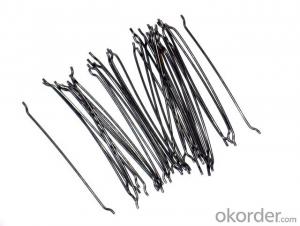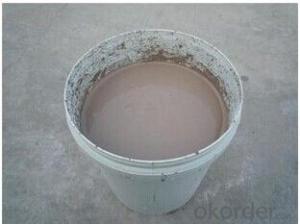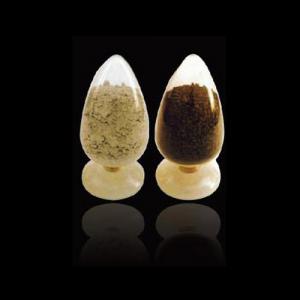Ceramic Lined Ceramic Ball Valve Product
- Loading Port:
- Qingdao
- Payment Terms:
- TT OR LC
- Min Order Qty:
- 1000 pc
- Supply Capability:
- 3000 pc/month
OKorder Service Pledge
OKorder Financial Service
You Might Also Like
Application:
Applied in any media, expect HF (Hydrofluoric Acid) or glass solution, with max. temperature up to 500°C or max pressure 5.0 Mpa, such as high corrosion, high attrition and middle pressure.
Structural: 3-part flange type float ball valve Flange standards follow DIN/ANSI/API/JIS
l Excellent wear-proof property of ceramic enables this valve have high reliability and prolonged lifespan which is 2-4times as much as Titannium Alloy and Monel Metal valve.
l Elastic O ring fit between metal part and ceramic part makes the whole part high sealing capacity, unables the two parts blind, and avoid the ball broken.
l Valve steams are selected among 316/316L stainless steel, HC alloy, Monel Alloy, structural ceramic.
l Completely symmetric design ensures dual leak-proof and two-direction usage to prolong its lifespan to twice.
All parts that connect the medium are made of structural ceramics with extremely high chemical stability and hardness (HRC 90), which is only inferior to diamond. So the valve features exceedingly high wear-proof capability, corrosion resisting, enduring capability, good heat insulation, small thermal expansion.
The valve is unique in granule medium of high hardness, or erosive soft granule and is the only choice for such medium. They are wisely used in FDG System, Slag system and LNCFS in power plant, saline water and distilling processes in alkali works, paper pulp system in paper mill, and so on.
The ball is processed by advanced polishing equipment and technology that can ensure high circularity, good surface quality,.
The self-lubricating capability of ZrO2, ensure the good sealing performance between the ball and its seat. It is thoroughly free from the defects of easy leakage, big torque, non-resistance sealing surface comparing with metal sealing valve.
ZrO2 Composition Chart of MZ Ceramic Ball Valve
NO. | Physical Property | Parameter |
1 | Crystal | >85% cubic, the rest monoclinic |
2 | Lg. Loss | 0.8%-1.0% |
3 | Average | 0.4-0.7um |
4 | Apparent Density | >0.4g/cc |
5 | ZrO2 Purity | >99.95% |
6 | Tapped Density | >0.8g/cc |
- Q:How do monolithic refractories prevent thermal radiation in the iron and steel industry?
- Monolithic refractories play a crucial role in preventing thermal radiation in the iron and steel industry. Thermal radiation refers to the transfer of heat energy through electromagnetic waves, and it can be a significant challenge in this industry due to the high temperatures involved. Monolithic refractories, which are single-piece refractory materials, are designed to have excellent thermal insulation properties. They have low thermal conductivity, which means they are not good conductors of heat. This property allows them to act as a barrier against thermal radiation. When used in the iron and steel industry, monolithic refractories are typically applied as linings in furnaces, ladles, and other equipment that are exposed to extremely high temperatures. These linings serve as a protective layer, preventing the heat from escaping and reducing the amount of thermal radiation emitted. Additionally, monolithic refractories have high emissivity, which refers to their ability to absorb and re-emit thermal radiation. This property allows them to effectively capture and contain the heat within the equipment, minimizing the amount of radiation that escapes into the surroundings. By preventing thermal radiation, monolithic refractories help to maintain the desired temperatures within the iron and steel production process. This is crucial for achieving efficient and controlled operations, as well as ensuring the quality of the final products. Furthermore, the use of monolithic refractories in the iron and steel industry also contributes to energy savings. By reducing the heat loss through thermal radiation, less energy is required to maintain the desired temperatures, resulting in lower energy consumption and cost savings. In conclusion, monolithic refractories are essential in preventing thermal radiation in the iron and steel industry. Their excellent thermal insulation properties, low thermal conductivity, and high emissivity make them effective barriers against heat transfer through radiation. By minimizing heat loss and ensuring controlled temperatures, monolithic refractories contribute to efficient operations, high-quality products, and energy savings.
- Q:What are the factors affecting the lifespan of monolithic refractories?
- The lifespan of monolithic refractories can be significantly affected by several factors. 1. Operating temperature is a critical factor. While monolithic refractories are designed to withstand high temperatures, prolonged exposure to extreme temperatures can cause thermal shock and lead to premature failure. 2. Thermal cycling, which refers to frequent temperature fluctuations, can also shorten the lifespan of monolithic refractories. The refractory material expands and contracts, creating stress that can result in cracking and degradation over time. 3. The chemical environment where the monolithic refractories are used plays a crucial role in their lifespan. Exposure to corrosive gases, acids, alkalis, or molten metals can cause chemical reactions that degrade the refractory material. 4. Mechanical stress, such as abrasion, impact, and vibration, can weaken monolithic refractories and reduce their lifespan. This is particularly important in industries with high mechanical activity, such as steelmaking or cement production. 5. Proper installation and regular maintenance are essential for maximizing the lifespan of monolithic refractories. Inadequate installation techniques or neglecting maintenance can result in weak joints, inadequate anchoring, or the growth of cracks, leading to premature failure. 6. The quality and composition of the monolithic refractory material greatly impact its lifespan. Higher-quality materials with better resistance to temperature, chemical attacks, and mechanical stress tend to have longer lifespans. 7. The design of the refractory lining and its engineering considerations, such as thickness, shape, and reinforcement, also influence the lifespan of monolithic refractories. A proper design can distribute stress more evenly, reduce thermal gradients, and improve overall performance and durability. 8. The way monolithic refractories are operated and handled can affect their lifespan. Factors such as rapid temperature changes, improper cooling or heating procedures, or excessive thermal cycling can all contribute to premature failure. In conclusion, various factors such as temperature, thermal cycling, chemical environment, mechanical stress, installation and maintenance practices, quality of refractory material, design and engineering considerations, and operating conditions all impact the lifespan of monolithic refractories. Proper management and consideration of these factors are essential for maximizing their lifespan.
- Q:How do monolithic refractories perform in high-temperature environments?
- Monolithic refractories perform exceptionally well in high-temperature environments due to their ability to withstand extreme heat without significant deformation or structural damage. They exhibit excellent thermal conductivity, resistance to thermal shock, and maintain their strength and integrity even at elevated temperatures. This makes them ideal for applications such as kilns, furnaces, and other industrial processes where consistent and reliable performance at high temperatures is crucial.
- Q:What are the specific requirements of monolithic refractories for continuous casting applications?
- The specific requirements of monolithic refractories for continuous casting applications include high thermal shock resistance, excellent erosion resistance, good thermal conductivity, low shrinkage, and high refractoriness. These refractories must also have good flowability and workability to ensure easy installation and maintenance. Additionally, they should have a high degree of chemical stability to withstand the harsh conditions of molten metal and slag in continuous casting processes.
- Q:How do monolithic refractories enhance the performance and longevity of furnaces?
- The performance and longevity of furnaces can be greatly improved through the use of monolithic refractories. These specialized materials are designed to withstand harsh conditions, such as high temperatures, thermal shock, and chemical exposure, making them an ideal choice for lining furnaces. One major advantage of monolithic refractories is their excellent insulation properties, which minimize heat loss and maximize energy efficiency. This insulation ensures that the furnace maintains a consistent temperature, allowing for more effective and efficient heating processes. Additionally, it prevents external factors from interfering with the internal temperature, ensuring stable and controlled heating operations. Another benefit of monolithic refractories is their high resistance to thermal shock. Furnaces often experience rapid temperature changes, but these refractories can handle such fluctuations without cracking or spalling, preserving the integrity of the furnace lining. This resistance to thermal shock also enhances safety by reducing the risk of sudden failure or damage to the furnace structure. Furthermore, monolithic refractories exhibit excellent chemical resistance, making them highly durable in aggressive environments. Furnaces are frequently exposed to corrosive gases, molten metals, and chemical reactions, but these refractories can withstand these harsh conditions, protecting the furnace lining and preventing contamination of heated materials. Moreover, monolithic refractories offer easy installation and repair. Unlike traditional brick refractories that require time-consuming construction, monolithic refractories can be cast or gunned into place, allowing for quick and efficient installation. Additionally, if any damage occurs, these materials can be easily patched or repaired, minimizing downtime and ensuring uninterrupted furnace operation. In conclusion, the use of monolithic refractories greatly enhances furnace performance and longevity. Their insulation properties, resistance to thermal shock, chemical durability, and ease of installation and repair make them a valuable choice for manufacturers looking to improve furnace efficiency, maintain consistent temperatures, ensure safety, and prolong furnace lifespan.
- Q:How do monolithic refractories contribute to the reduction of heat loss in iron and steel furnaces?
- Monolithic refractories play a crucial role in reducing heat loss in iron and steel furnaces by providing excellent insulation and maintaining a high level of thermal efficiency. These materials are designed to withstand extreme temperatures and are applied as a single, seamless lining, eliminating joints and gaps that could allow heat to escape. By creating a barrier between the hot furnace and the surrounding environment, monolithic refractories effectively minimize heat loss, ensuring optimal energy utilization and cost savings in the iron and steel industry.
- Q:What are the common testing methods used to evaluate the performance of monolithic refractories?
- To evaluate the performance of monolithic refractories, various commonly used testing methods are employed. These methods aid in determining the durability and suitability of refractory materials for different applications. Some of the frequently utilized testing methods include: 1. Thermal Conductivity Testing: This method gauges the heat conductivity of a refractory material. It assists in assessing the insulation properties and resistance to thermal shocks. 2. Compression Testing: This test measures the compressive strength of the refractory material. It provides insights into its ability to withstand external forces and pressure without fracturing or deforming. 3. Abrasion Testing: This method assesses the refractory material's resistance against wear and tear caused by abrasive forces. It helps evaluate its ability to endure erosive conditions and prolonged exposure to harsh environments. 4. Creep Testing: By measuring the deformation or sagging of the refractory material under high temperatures and constant loading, this testing method assesses its resistance to deformation and ability to maintain shape over time. 5. Thermal Expansion Testing: This test determines the expansion and contraction characteristics of the refractory material when exposed to different temperatures. It aids in evaluating its ability to withstand thermal cycling without cracking or fracturing. 6. Chemical Resistance Testing: This method evaluates the refractory material's resistance to chemical attacks, such as corrosion or erosion resulting from chemical reactions. It assists in determining its suitability for applications involving contact with corrosive substances. 7. Refractoriness Under Load (RUL) Testing: This test measures the refractory material's ability to withstand high temperatures while maintaining structural integrity. It aids in assessing its resistance to thermal stresses and suitability for high-temperature applications. These testing methods provide valuable data for evaluating the performance of monolithic refractories and ensuring their appropriateness for specific industrial applications. By considering these properties, manufacturers and users can make well-informed decisions regarding the selection and usage of refractory materials.
- Q:What are the typical compositions of monolithic refractories?
- The typical compositions of monolithic refractories include high alumina, fireclay, silica, magnesia, and carbon-based materials. These compositions are combined with binders, additives, and aggregates to form the monolithic refractory materials.
- Q:What are the advancements in monolithic refractory technology for the iron and steel industry?
- There have been significant advancements in monolithic refractory technology for the iron and steel industry in recent years. Monolithic refractories are a type of heat-resistant material used to line the walls and floors of high-temperature industrial processes, such as those involved in iron and steel production. One of the key advancements in monolithic refractory technology is the development of new and improved materials. Traditional refractory materials, such as firebricks, have been replaced by more advanced materials like castables and gunning mixes. These new materials offer superior performance in terms of thermal conductivity, thermal shock resistance, and erosion resistance. They can withstand higher temperatures and can be applied more efficiently, resulting in improved process efficiency and reduced downtime for maintenance. Another important advancement is the use of advanced additives in monolithic refractories. These additives can enhance the properties of the refractory material, such as increasing its resistance to corrosion and erosion. They can also improve the bond between the refractory and the substrate, ensuring a longer lifespan for the lining. Furthermore, advancements in monolithic refractory technology have led to the development of innovative installation techniques. For instance, shotcreting, a process that involves spraying the refractory material onto the surface, has gained popularity due to its efficiency and ability to provide a uniform lining. Similarly, the use of gunning machines, which pump the refractory material at high velocity, has improved the speed and accuracy of installation. Moreover, there have been advancements in the design of monolithic refractories specifically tailored for different applications in the iron and steel industry. Refractories for blast furnaces, ladles, tundishes, and other critical equipment have been optimized to withstand the unique challenges and harsh conditions of these processes. The development of specialized monolithic refractories has resulted in increased productivity, reduced energy consumption, and improved product quality in the iron and steel industry. In conclusion, advancements in monolithic refractory technology for the iron and steel industry have brought about improved materials, advanced additives, innovative installation techniques, and specialized designs. These advancements have significantly enhanced the performance, durability, and efficiency of refractory linings in high-temperature industrial processes. As a result, the iron and steel industry can benefit from increased productivity, reduced downtime, and improved product quality.
- Q:How do monolithic refractories improve the performance and efficiency of iron and steel production?
- Monolithic refractories play a crucial role in improving the performance and efficiency of iron and steel production. These specialized materials are designed to withstand extreme temperatures, chemical reactions, and mechanical stresses, making them ideal for use in high-temperature industrial processes. One of the key ways in which monolithic refractories enhance performance is by providing a protective lining in furnaces, kilns, and other equipment used in iron and steel production. Due to their superior heat resistance, they protect the underlying structure from the intense heat and prevent any detrimental effects on the equipment. This results in reduced downtime, longer service life, and ultimately, increased overall efficiency. Monolithic refractories also ensure better thermal efficiency in the production process. By minimizing heat losses, these materials help to maintain a stable and uniform temperature distribution, thereby improving the energy efficiency of the system. This is particularly important in iron and steel production, where precise temperature control is crucial for achieving the desired metallurgical properties of the final product. Furthermore, monolithic refractories offer excellent resistance to chemical corrosion, erosion, and slag attacks. They act as a barrier between the molten metal and the refractory lining, preventing undesirable reactions and material degradation. This helps to maintain the integrity of the furnace lining, reducing the need for frequent repairs or replacements. Consequently, it leads to increased productivity and cost savings in the long run. Another advantage of monolithic refractories is their ability to be easily shaped, repaired, or replaced. Unlike traditional brick refractories, which require extensive labor and time-consuming installation, monolithic refractories can be applied in a more flexible and efficient manner. Their flexible nature allows for easy repair of damaged areas, minimizing downtime and ensuring continuous production. In summary, the use of monolithic refractories significantly enhances the performance and efficiency of iron and steel production. These materials provide a protective lining, improve thermal efficiency, resist chemical corrosion, and offer easy installation and repair options. By optimizing the production process, monolithic refractories contribute to higher productivity, reduced downtime, and increased cost-effectiveness in the iron and steel industry.
1. Manufacturer Overview |
|
|---|---|
| Location | |
| Year Established | |
| Annual Output Value | |
| Main Markets | |
| Company Certifications | |
2. Manufacturer Certificates |
|
|---|---|
| a) Certification Name | |
| Range | |
| Reference | |
| Validity Period | |
3. Manufacturer Capability |
|
|---|---|
| a)Trade Capacity | |
| Nearest Port | |
| Export Percentage | |
| No.of Employees in Trade Department | |
| Language Spoken: | |
| b)Factory Information | |
| Factory Size: | |
| No. of Production Lines | |
| Contract Manufacturing | |
| Product Price Range | |
Send your message to us
Ceramic Lined Ceramic Ball Valve Product
- Loading Port:
- Qingdao
- Payment Terms:
- TT OR LC
- Min Order Qty:
- 1000 pc
- Supply Capability:
- 3000 pc/month
OKorder Service Pledge
OKorder Financial Service
Similar products
New products
Hot products
Hot Searches
Related keywords



























